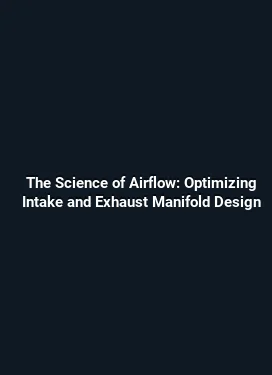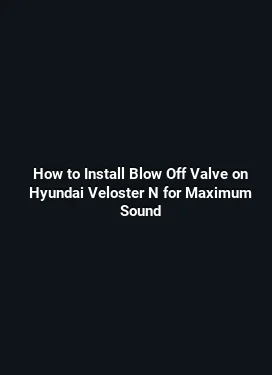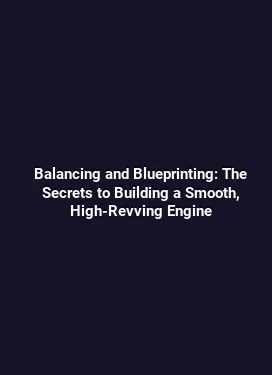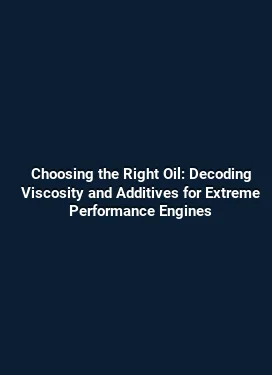Supercharger vs Twin Turbo Setup for Chevrolet Camaro SS: Cost Analysis
The Chevrolet Camaro SS represents a versatile platform for enthusiasts seeking high performance with daily drivability. When upgrading the powertrain, two dominant forced induction paths emerge: a supercharger upgrade and a twin turbo system. This article delves into the financial aspects of each route, including component costs, installation labor, reliability considerations, tuning needs, and the practical implications for daily use and track performance. By presenting concrete numbers, real-world scenarios, and maintenance expectations, readers can make an informed decision that aligns with their goals and budget.
Overview of Forced Induction Options for Camaro SS

Forced induction increases the amount of air entering the engine, enabling more fuel to be burned and thus higher horsepower and torque. A supercharger uses belt-driven compression to deliver boost consistently across the RPM range, while twin turbo systems rely on exhaust-driven turbines paired with intercooling to produce high boost, often with greater peak gains but more complex plumbing and tuning. For a Camaro SS tuned around high-performance response, both paths can yield dramatic improvements. However, the total cost of ownership, installation complexity, and long-term reliability differ in meaningful ways that affect value and satisfaction over time.
In practical terms, decisions hinge on several factors: how you will use the car (daily driving vs. weekend track days), your desired power target, space available in the engine bay, and tolerance for potential maintenance overhead. The following sections break down the cost components, provide ballpark figures, and illustrate how prices vary with brands, caliber of parts, and shop configuration. The goal is to illuminate not just sticker price, but the overall investment required to achieve a specific performance outcome.
Cost Structure: Core Components and Their Price Ranges
Understanding the cost structure requires separating hardware, installation, and supporting upgrades that can impact overall expenditure. Both routes share certain essentials—durable intercooling, engine management compatibility, and driveline reinforcement—yet the specifics drive significant price differences.
Supercharger Path: Core Components and Typical Pricing

A modern supercharger package centers on a roots or twin-screw blower, an intake manifold, intercooler, belt drive system, and ECU calibration. In most Camaro SS applications, a complete supercharger kit includes an oversized crank pulley or boost strategy, return fuel system or retuned fuel injectors, upgraded intake plumbing, and sometimes a revised exhaust manifold interface. Typical pricing can be broken into several buckets: - Hardware kit: $5,500 to $9,000 depending on brand (e.g., roots vs. screw technology), intercooler sizing, and included ancillaries. - Fuel system and tuning: $1,000 to $3,000 for injectors, pumps, and a professional calibration tailored to the setup. - Supporting upgrades: $400 to $1,400 for upgraded intake, exhaust, or heat management compatible with the blower. - Labor: $1,000 to $2,500 for installation, which varies by shop complexity and whether engine bay wiring or drivetrain supports must be modified. - Optional reliability and warranty extensions: $0 to $1,200 depending on dealer or third-party coverage. > Real-world total ranges for a complete supercharger upgrade typically fall between $8,000 and $15,000, though top-tier systems with extensive supporting upgrades can exceed $15,000. The price variance reflects blower type, intercooler efficiency, drivetrain compatibility, and the level of ECU tuning required to reach target power safely.
Additionally, the cost of a higher-capacity intercooler and a dedicated return-style fuel system can materially affect the final tally. For street applications that prioritize low-end torque and linear throttle response, a well-matched supercharger kit often provides a more predictable power curve, with less parasitic loss in low RPM ranges compared to turbocharged equivalents. This translates into a more approachable driving experience and, in many cases, a simpler tuning process for street-driven cars.
Twin Turbo Path: Core Components and Typical Pricing
A twin turbo configuration emphasizes paired exhaust-driven turbines, intercooling, and often complex plumbing to route exhaust flow to a pair of turbines positioned to optimize packaging and response. The major cost categories include:
- Turbo kit with manifold and downpipes: $4,000 to $9,000 depending on trim quality, turbine size, and whether the kit uses factory-like exhaust routing or custom fabrications.
- Intercooling system: $800 to $3,000 depending on air-to-air vs. air-to-water intercooler, core size, and dual-core implementations.
- Engine management and tuning: $1,200 to $3,000 for a robust calibration that accounts for boost strategy, fuel mapping, and ignition timing across RPM ranges.
- Supporting upgrades: $1,000 to $2,500 for fuel system enhancements, intake plumbing, and exhaust system modifications.
- Labor: $2,000 to $5,000 reflecting the intricacy of turbo plumbing, exhaust routing, and possible intercooler integration challenges.
Overall, a complete twin turbo package tends to range from roughly $12,000 to $20,000 or more, particularly when aiming for high horsepower targets (well beyond stock efficiency and reliability). Packaging challenges, such as compact routing around the front subframe, turbo placement for heat management, and the need for precision exhaust manifold fabrication, contribute to higher installation costs and potential time in the shop.
Install Day Realities: Labor, Time, and Shop Considerations
Labor cost is often the largest single factor in total expenditure. A straightforward supercharger install on a Camaro SS might cost less in labor due to simpler plumbing and a more plug-and-play ECU reflash or calibration. In contrast, twin turbo systems typically demand meticulous exhaust routing, custom intercooler plumbing, and more intricate exhaust and fuel system integration, which can extend shop time significantly.
Shop selection also matters. A high-volume performance shop with a history of Camaro builds may offer lower hourly rates but longer turnaround times, whereas a boutique shop with specialized experience in forced induction might command a premium for precision work and proven reliability. The skill level of technicians, the quality of supporting parts (injectors, pumps, lines, fittings), and the availability of factory-grade calibration software all influence both price and risk.
Another practical factor is the warranty landscape. Some kits come with manufacturer-backed warranties that cover specific components for a defined period, while others rely on third-party warranties or no warranty at all. When evaluating cost, including the warranty value and the potential for future charges related to calibration changes or component wear is prudent.
Performance, Reliability, and Daily Use: How Costs Translate to Real-World Value
Price is only part of the story. The long-term value of a forced induction upgrade also hinges on reliability, maintenance requirements, and ownership costs beyond the initial install. A supercharger installation, with its relatively straightforward boost curve, can deliver consistent performance gains with predictable maintenance. Typical maintenance considerations include ensuring belt drive alignment, intercooler cleanliness, and periodic inspection of piping clamps and couplings to prevent boost leaks. Routine fuel system checks and timely spark plug service remain essential, especially on high-boost street setups where combustion dynamics are stressed.
On the other hand, a twin turbo system often yields impressive peak horsepower and torque, with potential for greater peak efficiency at higher RPM. However, turbo systems introduce more moving parts, such as wastegates, blow-off valves, and intercooler plumbing that must be kept free of leaks. Heat management becomes critical, as turbocharged engines generate significant heat that can affect intake temps and overall reliability if not properly managed. From a cost perspective, ongoing maintenance for a turbo setup can include more frequent intercooler inspection, turbocharger shaft wear monitoring, and careful boost management to avoid detonation under heavy load.
For daily driving, the choice may hinge on throttle response and driveability. A well-tuned supercharger often delivers immediate boost with minimal lag, which can translate into a more intuitive and responsive daily experience. Turbo systems can deliver outstanding top-end power but may exhibit slight throttle lag at very low throttle positions before the turbos spool. The economic value of this difference can be weighed against the user’s typical driving profile and performance aspirations.
Detuning, Tuning, and Long-Term Flexibility
Both upgrade paths demand a thoughtful tuning approach to maximize performance while protecting the engine. A conservative, street-friendly tune often prioritizes reliability and part longevity, using modest boost targets and robust fueling strategies. For enthusiasts seeking maximum dragstrip times or track-focused performance, higher boost levels and aggressive timing maps come with increased risk and higher maintenance costs. In practice, a well-engineered tune can preserve engine life even under demanding conditions, but the cost of reputable tuning services should be factored into the total project budget.
Another aspect of long-term flexibility is the potential for return to stock or modular upgrades. A Camaro SS owner might opt for a staged plan: start with a turbo or supercharger kit aimed at a specific horsepower target, evaluate real-world performance, and then decide whether to push further. When planning future upgrades, it is important to verify compatibility with transmission internals, differential gear sets, and driveline components, as increased power can amplify wear on these systems. From a cost perspective, staged upgrades can help spread investment over time while allowing performance data collection to inform subsequent choices.
Warranty, Emissions, and Road-Use Considerations
Warranties vary by kit and installer. Some manufacturers offer limited warranties on specific components when installed by approved shops, while third-party warranties may impose mileage or use restrictions. It is crucial to read the fine print and understand what is covered, as some warranties do not extend to tune changes or additional fueling hardware. Emissions compliance can also be a consideration depending on local regulations and the state of tune. In regions with strict emissions testing, a carefully engineered setup that maintains or improves emissions profiles is important. Crafting a solution that balances performance gains with legal and regulatory considerations should be part of the planning process from the outset.
Road-use realities include daily comfort, fuel economy shifts, and reliability under varied climate conditions. Supercharger systems often pair with a more linear torque curve, which can feel more predictable for daily drivers. Turbo setups may demonstrate more pronounced power delivery at altitude or under long, sustained pulls, but can be more sensitive to heat soaking and boost control under hot conditions. Selecting hardware and tuning that accounts for climate, fuel quality, and driving patterns helps ensure the ownership experience remains positive over time.
Practical Case Scenarios: Budget Ranges and Real-World Outcomes
To frame the discussion, consider three practical scenarios that illustrate how cost and performance considerations unfold in real life. Scenario A targets a balanced daily driver with a modest power bump. Scenario B emphasizes strong mid-range torque with occasional track use. Scenario C pursues peak horsepower for limited-track sessions and high-performance enthusiasts.
Scenario A: A street-focused Camaro SS upgrades to a reputable supercharger kit with a conservative tune, resulting in a total investment around $9,000 to $12,000. Expect a noticeable increase in low- to mid-range torque, improved throttle response, and a more assertive street presence. Ongoing costs include periodic fuel system checks and routine maintenance, with a focus on belt and intercooler cleanliness.
Scenario B: A twin turbo approach designed for robust mid-range torque, with a balanced intercooling strategy and calibrated boost curves. Total cost commonly lands in the $12,000 to $16,000 range, depending on the complexity of exhaust routing and the sophistication of the fuel and ignition control. Ownership benefits include strong pulling power at mid to high RPM, but be prepared for more extensive heat management measures and longer maintenance intervals for turbo plumbing and intercooler systems.
Scenario C: A high-horsepower build targeting maximum track performance with a high-boost twin turbo solution. Costs often exceed $18,000 and can approach $25,000 when incorporating premium components, extensive fuel system upgrades, and professional-grade engine management. This path emphasizes peak output and track reliability but requires a more rigorous maintenance and monitoring program, including frequent torque testing, intercooler performance verification, and potential engine internals assessment as power targets push beyond the stock block’s safe limits.
Key Takeaways: Making a Thoughtful Choice
Both supercharger and twin turbo upgrades offer meaningful performance gains for the Camaro SS, but the total cost of ownership and daily practicality differ significantly. A supercharger path tends to deliver immediate, predictable throttle response with simpler integration and often lower maintenance overhead for street use. A twin turbo route can unlock substantial peak power and strong high-RPM performance but demands careful heat management, precise tuning, and a higher initial investment. Aligning the choice with driving preferences, budget constraints, and long-term ownership plans yields the best overall value.
Prospective buyers should evaluate the total package, including installer reputation, calibration expertise, long-term reliability data, warranty coverage, and the availability of service support. Gathering multiple quotes, requesting dyno sheets from shops, and reviewing case studies from Camaro SS builds can illuminate how different configurations behave in real-world driving. The decision ultimately comes down to balancing cost with the degree of performance enhancement, daily drivability, and the level of engineering confidence that aligns with personal expectations.






